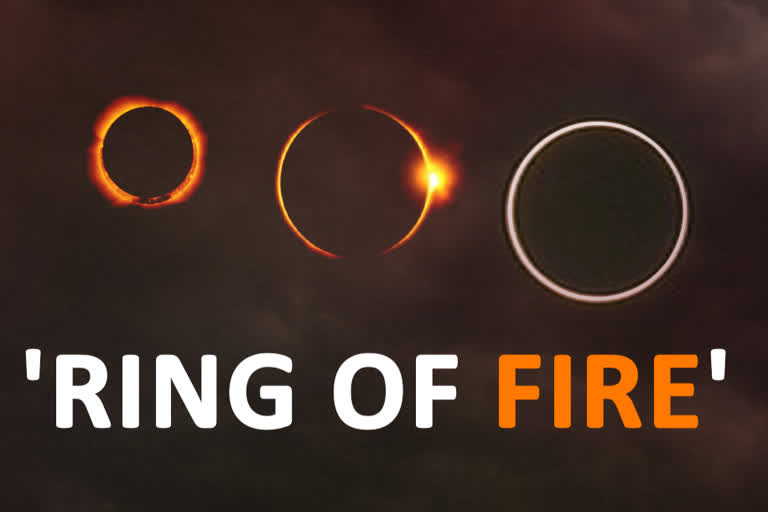Islamabad: An annular solar eclipse said to be the last big celestial event of the year will be visible across the Middle East, south-east Asia, and Australia on Thursday.
The Pakistan Meteorological Department has said that the eclipse started at 7:30 a.m. to 1:06 p.m. (local time) would be visible all over Pakistan, especially in Karachi and Gwadar.
The solar eclipse appeared in Jaffna and other areas in northern Sri Lanka. The eclipse which entered the island from Mannar was visible in Jaffna at 9:34 am and lasted only 4 minutes, ended at 9:38 a.m. (local time).
A partial solar eclipse moves behind statues in Islamabad, on Thursday. In India, the eclipse which was visible in several parts of the country including Odisha, Kerala, Gujarat, Tamil Nadu, Karnataka, Maharashtra and Delhi began at 8:17 am and continued till 10:57 am today.
Meanwhile, in Bangladesh, the Met Department has predicted that the annular eclipse of the sun will be visible only if the sky remains clear. The eclipse began at 9:02 a.m. and ended at 12:08 p.m. With the maximum eclipse occurring at 10:28 a.m. (local time).
A partial solar eclipse moves behind a statue in Islamabad, on Thursday. Muslims in the UAE were encouraged to perform the solar eclipse prayers in conjunction with the eclipse on Thursday. The General Authority for Islamic Affairs and Endowments held a solar eclipse prayer across the UAE on Thursday at 07:40 in the morning at Shaikh Zayed mosques and other major mosques in each emirate.
Besides this, the decade's last eclipse was also be visible in Malaysia, Saudi Arabia, Qatar, Indonesia, Singapore, Oman, and Guam.
People offer special 'Kusoof' prayers at the Faisal mosque during a solar eclipse in Islamabad, on Thursday. The solar eclipse was not a total eclipse but an annular one. In other words, the sun and the moon were positioned in a way to form a "ring of fire" as the moon would not be able to completely cover the sun, illuminating its edges.
A partial solar eclipse moves behind a statue in Islamabad, on Thursday. The rare and historic event was completely different from the total solar eclipse that took place in August 1999 due to the 'albedo effect'. It means that most of the radiation did not reach the ground and got deflected back into space because of cloudy skies.
Read Also: 'Ring of fire' in sky, India witnesses annular solar eclipse
